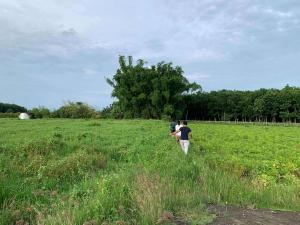When the Poor and the Planet Wither Together—Hope Emerges Through the Satoyama Mace Initiative
UN’s Satoyama Mace Initiative empowers Indigenous farmers, restores ecosystems, and delivers carbon credit revenue across the Global South.
TAIWAN, September 8, 2025 /EINPresswire.com/ -- Across the world, the poorest communities are quietly bearing the heaviest burdens of climate change. They are the ones most exposed to floods, droughts, and ecological collapse, yet the least responsible for the global systems that drive destruction. In this cruel irony, both the Earth and the poor are being drained together, their suffering rendered silent by global economic injustice.
Nowhere is this more visible than in the landscapes of the Global South, where rural communities live in fragile balance with land and sea. Along the lower reaches of Taiwan’s Jishui River, history itself tells this story. Once the coastline of the Daofeng Inner Sea, the area was first home to the Indigenous Pingpu peoples. Waves of settlers arrived during the Ming-Zheng period, reshaping the land with agriculture and trade. In the 18th century, the Zhai-Zi Port bustled with activity, but repeated shifts in the river’s course led to siltation. The great inner sea gradually disappeared, replaced by coastal plains that drew further waves of settlement. Riverbank communities rose—but they lived under the constant shadow of floods, forcing relocations that were recorded even during the Japanese colonial era.
Today, this same region has become the site of a new experiment in justice and sustainability. On 3,900 hectares of dryland corn farms, a demonstration project under the United Nations’ Satoyama Mace Initiative: Regional Revitalization of SEPLS in Carbon Credit, recently authorized by UNU-IAS, is rewriting the story. Using newly developed sustainability-based carbon reduction methodologies, the project is projected to reduce 700,000 tons of carbon each year. At a current value of USD $40 per ton, this means USD $28 million annually returned directly to Indigenous peoples and local farmers.
What was once land marked by displacement and ecological loss is now being reborn as a model of resilience. These carbon credit revenues create not only ecological restoration but also a sustainable financial lifeline for communities that have too often been pushed aside by global markets. It is a way of ensuring that those who once suffered as silent victims of economic injustice now become leaders in a just transition.
The significance of this model extends far beyond Taiwan. Across the Global South—in Asia, Africa, and Latin America—millions of hectares of traditional rural landscapes face similar struggles: degraded ecosystems, vulnerable farming systems, and poverty linked to global inequity. By demonstrating that carbon credits can be rooted in biodiversity, culture, and community, the Satoyama Mace Initiative provides a replicable path forward. It is not simply an environmental intervention—it is a movement for justice, dignity, and survival.
As the initiative expands to farmers’ associations and cooperatives worldwide, it aims to accelerate the low-carbon transition of Indigenous agricultural systems and strengthen their role in international carbon markets. In doing so, it ensures that the poor are no longer written into history as victims of decline, but as stewards of renewal.
Shu-Mei Wang
SEPLS Carbon Credit Regional Revitalization Center
email us here
Visit us on social media:
LinkedIn
Other
Legal Disclaimer:
EIN Presswire provides this news content "as is" without warranty of any kind. We do not accept any responsibility or liability for the accuracy, content, images, videos, licenses, completeness, legality, or reliability of the information contained in this article. If you have any complaints or copyright issues related to this article, kindly contact the author above.


